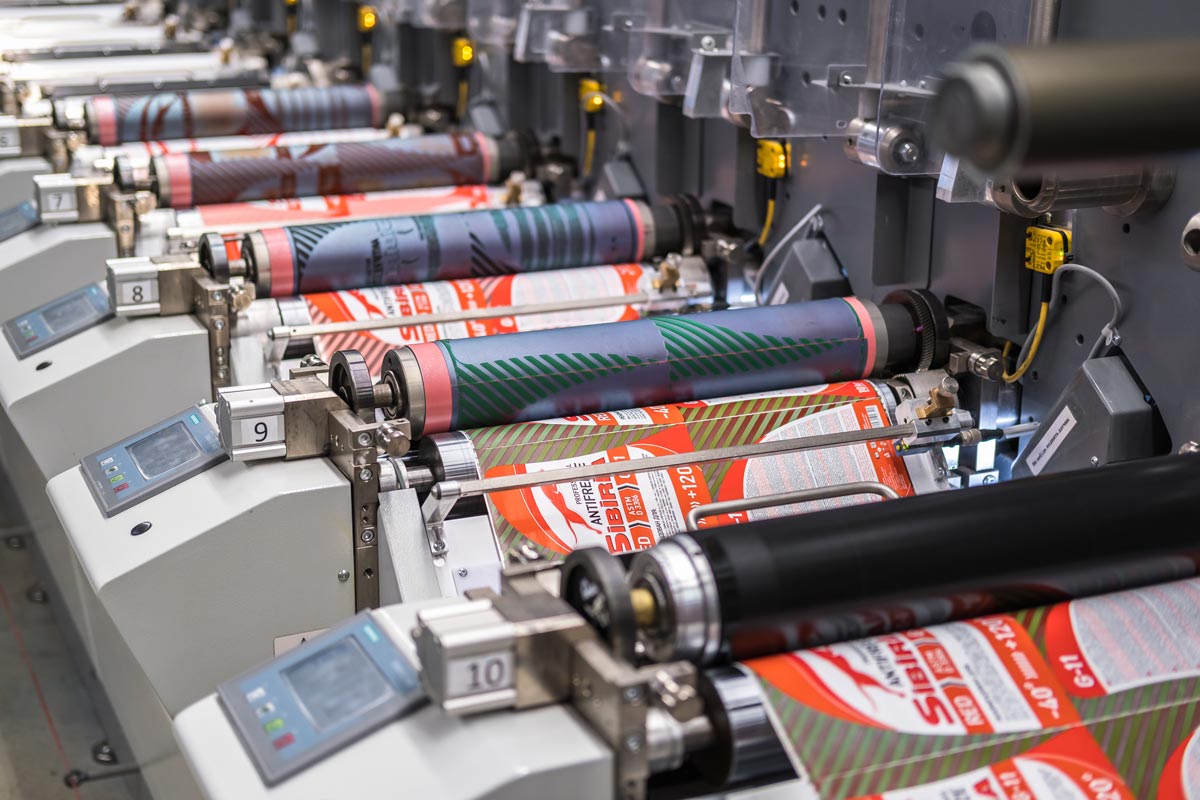In the world of printing, minimizing flexo press downtime is crucial for maximizing production efficiency and cost-effectiveness. This article explores the various strategies and techniques that can be employed to achieve significant reductions in downtime, thereby ensuring that your operations remain smooth and productive. Understanding the intricacies of flexo press downtime reduction can be a game-changer for businesses seeking to enhance their operational efficiency.

Understanding Flexo Press Downtime
Before delving into the strategies for reducing downtime, it’s essential to understand what flexo press downtime entails. Downtime refers to periods when the printing press is not operational due to maintenance, technical failures, or changeovers. Reducing these interruptions is key to maintaining a steady workflow.
Causes of Downtime in Flexo Press
Several factors can lead to downtime in flexo press operations:
- Technical Failures
- Maintenance Requirements
- Material Changeovers
- Operator Errors
Technical Failures
Technical failures are one of the primary causes of downtime. Issues with machinery components, electrical problems, or software glitches can halt production. Regular maintenance and timely upgrades can mitigate these issues.
Maintenance Requirements
Routine maintenance is essential for keeping the flexo press in optimal condition. However, poorly scheduled maintenance can result in unnecessary downtime. Implementing a preventative maintenance schedule can help avoid unexpected breakdowns.
Material Changeovers
Frequent changeovers of printing materials can lead to significant downtime. Streamlining the changeover process and training staff to execute changes swiftly can reduce downtime.
Operator Errors
Human errors can also contribute to downtime. Proper training and process standardization can minimize these errors, ensuring smoother operations.
Strategies for Reducing Flexo Press Downtime
Implement Preventative Maintenance
A proactive approach to maintenance can significantly reduce downtime. By scheduling regular check-ups and maintaining a log of equipment health, potential issues can be identified and addressed before they lead to breakdowns.
Streamline Material Changeovers
Optimizing the changeover process can substantially minimize downtime. This involves organizing materials efficiently and ensuring that operators are well-trained in swift changeover techniques. For more insights, you can read about ink drying systems.
Invest in Operator Training
Investing in comprehensive training programs for operators can reduce errors that lead to downtime. Skilled operators can identify potential issues early and execute tasks more efficiently. More information on training can be found in our file formats guide.
Utilize Automated Systems
Automation can play a significant role in reducing downtime. Automated systems can handle repetitive tasks, reducing the likelihood of human error and speeding up processes. Understanding flexography printing can provide further insights into automation benefits.
Technological Advancements in Flexo Printing
Technological advancements have significantly impacted the field of flexo printing, leading to improved efficiency and reduced downtime. Innovations such as automated diagnostics, IoT-enabled machines, and advanced software solutions have revolutionized the industry.
Automated Diagnostics
Automated diagnostic tools can quickly identify issues within the flexo press, allowing for faster troubleshooting and repairs. This minimizes the time spent identifying problems, thereby reducing downtime.
IoT-Enabled Machines
Internet of Things (IoT) technology enables machines to communicate with each other and with operators. This connectivity allows for real-time monitoring and data analysis, which can predict potential failures and optimize maintenance schedules.
Advanced Software Solutions
Advanced software solutions offer enhanced control over flexo press operations. These tools can automate various aspects of the printing process, from scheduling to quality control, reducing the need for manual intervention and minimizing downtime.
Measuring the Impact of Downtime Reduction
Measuring the impact of downtime reduction efforts is crucial for assessing the effectiveness of implemented strategies. Key performance indicators (KPIs) such as production output, machine utilization rates, and maintenance costs can provide valuable insights.
Production Output
By tracking production output before and after implementing downtime reduction strategies, businesses can quantify the improvements. Increased output is a direct indicator of reduced downtime and improved efficiency.
Machine Utilization Rates
Monitoring machine utilization rates can highlight the extent of downtime. Higher utilization rates indicate that the flexo press is operational for more extended periods, signifying successful downtime reduction efforts.
Maintenance Costs
Analyzing maintenance costs can reveal the financial impact of downtime reduction. Lower maintenance expenses suggest that preventative measures are effectively reducing the frequency of breakdowns.
Conclusion
Flexo press downtime reduction is essential for optimizing printing operations and ensuring cost-effectiveness. By implementing strategies such as preventative maintenance, streamlined changeovers, operator training, and technological advancements, businesses can minimize downtime and enhance overall efficiency. For more insights into related topics, explore our article on edge definition in flexo printing.

FAQs
What is flexo press downtime?
Flexo press downtime refers to periods when the printing press is not operational due to maintenance, technical failures, or other interruptions.
How can downtime be reduced in flexo press operations?
Downtime can be reduced through preventative maintenance, efficient material changeovers, operator training, and technological advancements.
What are the benefits of reducing flexo press downtime?
Reducing downtime leads to increased production efficiency, cost savings, and improved machine utilization rates.






